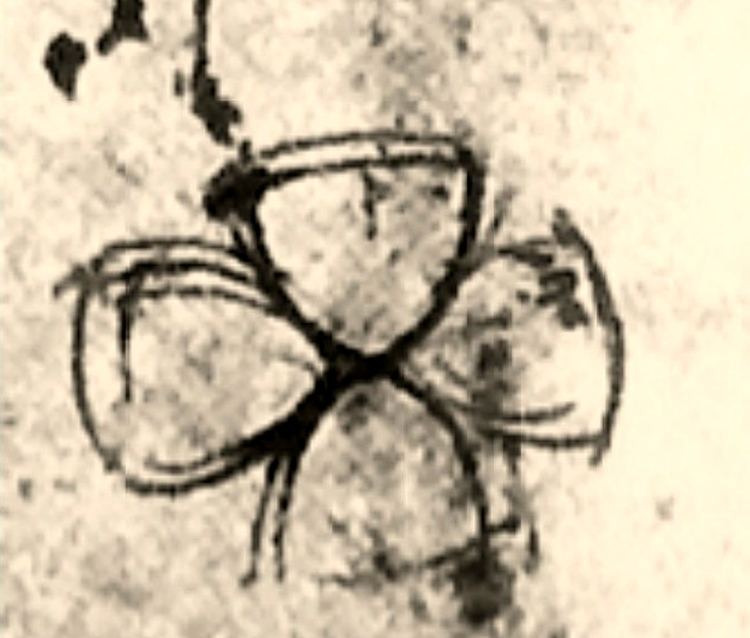 | ||
The octant projection or octants projection, is a type of projection proposed the first time, in 1508, by Leonardo da Vinci in his Codex Atlanticus. Leonardo's authorship would be demonstrated by Christoher Tyler paper,("..For those projections dated later than 1508, his drawings should be effectively considered the original precursors..") in fact, there is a sketch of it on a page in the Codex Atlanticus manuscripts, made from the very hand of Leonardo, being Leonardo's sketch, the first known description of the octant projection.
Contents
The same page of the Codex contains sketches of eight other projections of the globe (those known in the late fifteenth century), being studied by Leonardo, ranging from the Ptolemy's conical planisphere projection to the one proposed by Rosselli,
Description
The projection is neither conformal nor equal-area, bound by circular arcs, with no meridians and no parallels, in which the spherical surface of the earth is divided into eight octants, each flattened into the shape of a Reuleaux triangle. If transferred to an elastic support, it would be possible to cover with them the surface of a model of the earth's globe.
The eight triangles are oriented in a similar way as per two four-leaf clovers side by side, being the earth poles in the center of each clove. One of the sides of the eight triangles, (the one opposite to the center of the pseudo clover), is one fourth of the equator, the remaining two (those that converge to the center of the pseudo clover), are part of the two meridians that with the equator dissect the globe in the eight octants.
Similar projections
Projections also based on the Reuleaux triangle were published by:
Authorship controversy
Although Leonardo's first description of the octant projection would have been proved by Tyler, who decided to treat separately Leonardo's projection authorship (1508) from Leonardo's map authorship (1514) the other authors before him treat together the authorship of both map and projection, for they speak about "..the eighth of a supposed globe represented in a plane.." or about "globe sections" (Harrisse) or others about "gores", which are in fact a projection of the globe.
This authorship it is not universally accepted, with some authors being completely against any minimal contribution from Leonardo, such as Henry Harrisse (1892), or Eugène Müntz (1899 - citing Harrisse authority from 1892).
Other scholars accept explicitly both (map and projection:"..the eight of a supposed globe represented in a plane.."), completely as a Leonardo's work, describing the projection as the first of this type, among them, R. H. Major (1865) in his work Memoir on a mappemonde by Leonardo da Vinci, being the earliest map hitherto known containing the name of America, Grothe, the "Enciclopedia universal ilustrada europeo-americana" (1934), Snyder in his book Flattening the earth (1993), Christoher Tyler in his paper (2014) Leonardo da Vinci’s World Map, José Luis Espejo in his book (2012) "Los mensajes ocultos de Leonardo Da Vinci", or David Bower in his work (2012) "The unusual projection for one of John Dee's maps of 1580".
Others also accept explicitly both (map and projection) as authentic, although leaving in the air Leonardo's direct hand, giving the authorship of the work to one of his disciples as Nordenskjold states in his book "Facsimile-Atlas" (1889) confirmed by Dutton (1995) and many others: "..on account of the remarkable projection..not by Leonardo himself, but by some ignorant clerk.", or Keunig (1955) being more precise: "..by one of his followers at his direction..".
